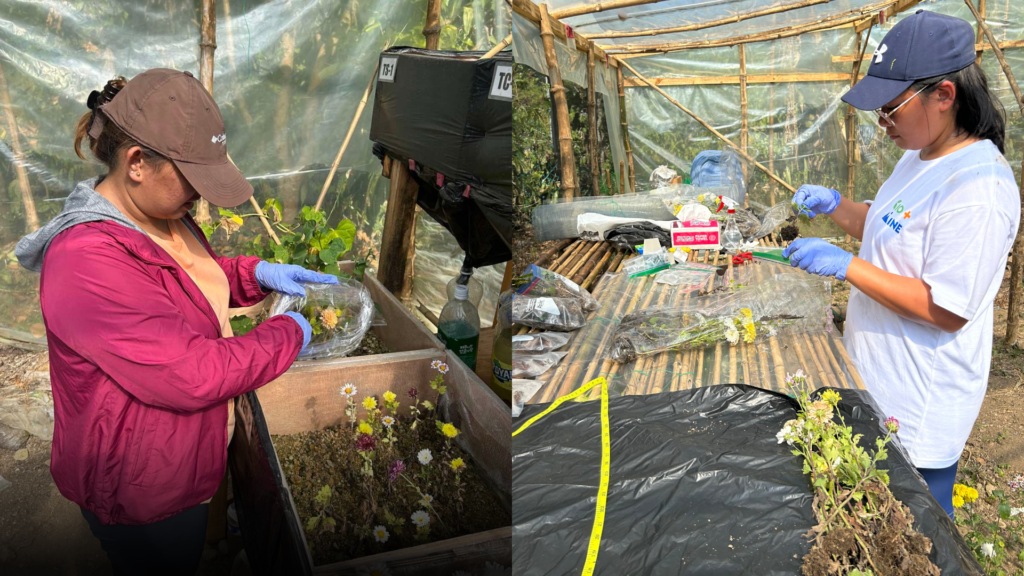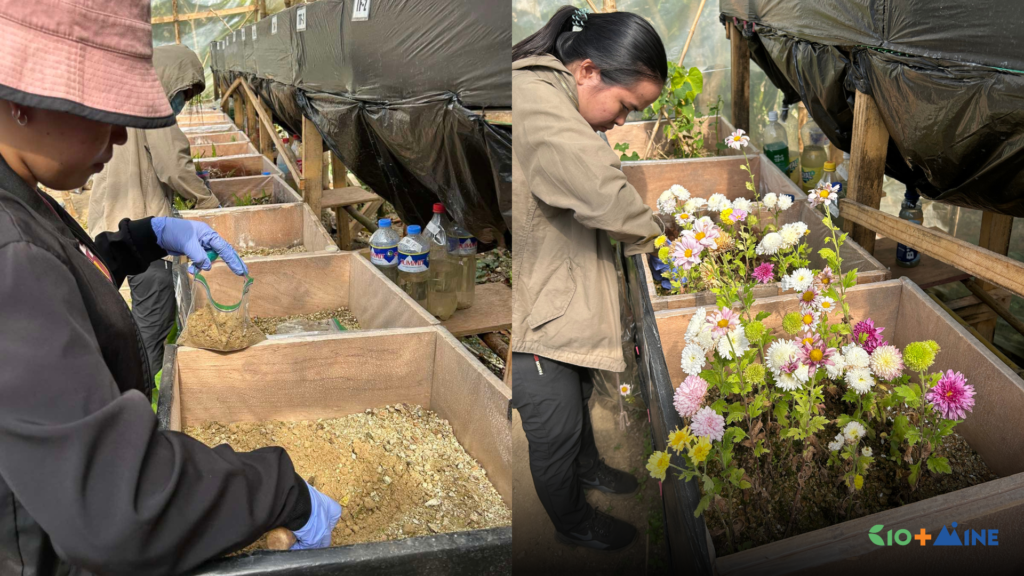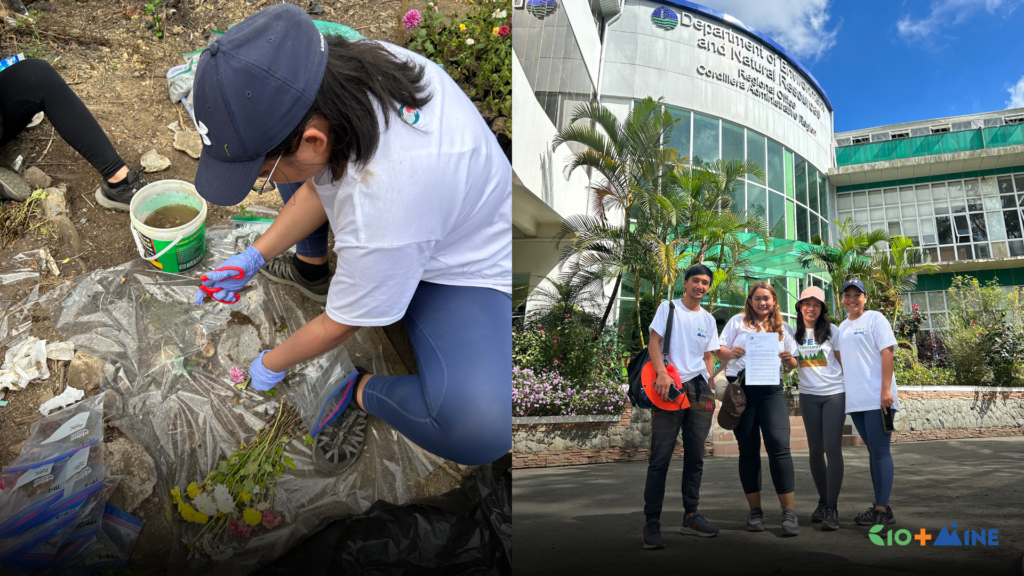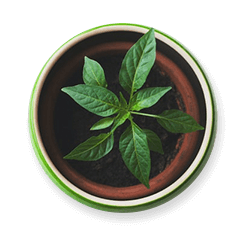Tublay, Benguet – 11 December 2023 marked the 60th day milestone of the Bio+Mine Eco Team’s mesocosm experiment. The team, represented by research assistants Janna Andalan, Alissa Jane Mondejar, Kryzzyl Maulas, and David and Jethro Guilingen, and joined by Merrah Joy Subebe, a graduate student at the Mindanao State University – Iligan Institute of Technology, collected samples from plants and soil in the mesocosm.

The mesocosm, broadly described as an experimental enclosure that simulates a larger-scale outdoor environment, is set up to explore the impacts of the legacy mine in Sto. Niño, Brgy. Ambassador on local plant growth. The 120-day experiment runs in a purpose-built screen house at the Bugtong Family Farm in Sto. Niño. The construction of screen house and acclimatization of the mesocosm took place on 20 September through 17 October 2023, following an earlier presentation to the Department of Environment & Natural Resources (DENR) – Protected Area Management Board on 31 August 2023 for securing permit.

One of the aims of the experiment is to investigate the effects of previously identified copper-resistant bacteria on hyperaccumulators, which are plants that accumulate certain metals or metalloids in their living tissues at significantly higher levels than are normal for most plants (Van Der Ent et al., 2012). This experiment is valuable because previous data of the Bio+Mine team indicated that “[copper] appears to be the only highly elevated trace element in samples from the Sto. Niño [mine] site” (Herrington et al., 2023).

The team later secured a gratuitous permit from the DENR Cordillera Administrative Regional Office to transport the collected samples for subsequent further analyses including X-ray fluorescence, biomass computation, and heavy metal accumulation. Findings and results of the mesocosm experiment will inform the formulation of sustainable strategies to rehabilitate the Sto. Niño legacy mine site and to improve the agriculture in the area.
References
Van Der Ent, A., Baker, A. J. M., Reeves, R. D., Pollard, A. J., & Schat, H. (2012). Hyperaccumulators of metal and metalloid trace elements: Facts and fiction. Plant and Soil, 362(1–2), 319–334. https://doi.org/10.1007/s11104-012-1287-3
Herrington, R., Alonzo, D., Armstrong, R., Balboa, C., Baniasadi, M., Beltrán, A. V. S., Brito-Parada, P., Cording, H., Creedy, S., Fernandez-Dalona, I. M., Dybowska, A., Graham, A. L., Guihawan, J. Q., Jungblut, A., Madamba, R., Magliulo, M., Maulas, K., Mondejar, A., Orbecido, A. H., . . . Villacorte-Tabelin, M. (2023). Development of a site-specific system for the rehabilitation of a former copper mine, Sto. Niño, Philippines. Proceedings of the International Conference on Mine Closure. https://doi.org/10.36487/acg_repo/2315_091
